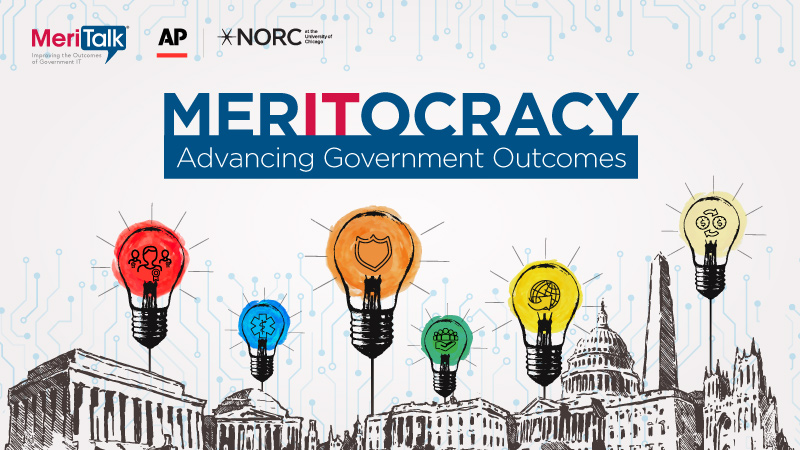
Can technology innovation – coupled with the boldest kind of leadership – work together to start fixing the most intractable problems facing America? On July 21 – we’re going to find out. The countdown to MerITocracy 2022: American Innovation Forum is on.
In the lead-up to the July 21 forum, we are table-setting a host of big issues that will get serious attention at MerITocracy 2022.
Chief among those are workforce and education issues facing our country, what skills are needed, how do we deliver them rapidly and at scale, and – most importantly – how the United States will fund this massive undertaking.
In today’s edition of Countdown to MerITocracy, we’re previewing policy efforts on two issues: 1) Well-documented challenges that the government and private sector face – and solutions they could pursue – in hiring and retaining a technology-skilled workforce as a big chunk of the current workforce ages out in the coming years; and 2) Education policy initiatives that can feed into workforce solutions.
Leading the charge on workforce challenges and solutions at the MerITocracy 2022 forum will be Rep. Ro Khanna, D-Calif., who represents a big chunk of Silicon Valley and its massive growth innovation engine.
The congressman is a leading legislative force on the kinds of growth-focused strategies that demand – and can end up creating – the quantum leaps in workforce skills and education that will help the United States rise to the demands of the next-generation economy and keep the nation as the world leader in innovation.
Just in recent months, for instance, he sponsored legislation that became the COMPETES Act now being conferenced by the House and Senate, and that promises to reestablish the U.S. domestic semiconductor industry and funnel billions of Federal funding to the National Science Foundation for the next wave of technology research and development work.
For Rep. Khanna, it’s not just dollars and cents. Commenting last year on the stalled Build Back Better legislation, he emphasized, ”all these investments include strong labor, justice, and environmental standards. Every dollar spent will go toward creating good jobs and fixing inequalities across our country.”
The in-person MerITocracy forum – at the Marriott Marquis in Washington, D.C., from 8:00 a.m. to 6:00 p.m. – will host bipartisan leaders from Congress, the Biden administration, and America’s tech industry to examine the most pressing problems facing citizens in our democracy, and map out creative solutions from the nexus of policy and technology. Register today.
Here’s a brief issue tracker on U.S. workforce and education issues, and what may be due to change soon:
Competing for Skilled Workers
The Federal government is in a sticky situation when it comes to hiring and retaining skilled workers – and pay plays a big role in it. The private sector can pay its employees much more than the Federal government can especially for highly skilled technology and cybersecurity positions, leaving the Federal government unable to compete for skilled tech workers.
With at least a half-million cybersecurity positions unfilled in the United States, many are urging the Federal government to increase pay for these vital employees. Federal experts and educators also agree that closing the gap on the shortage of cybersecurity professionals begins with cyber education efforts, particularly at the K-12 level. Wouldn’t it be remarkable if students graduated high school with an understanding of cybersecurity basics?
The Great Retirement
Another thorny issue with the Federal workforce is its age. Almost a third of the Federal workforce is eligible to retire in five years, and only about eight percent of Federal employees are under the age of thirty. The bottom line: the Federal government will face a big talent crisis if it fails to attract early career talent to Federal government service soon.
Working for the Federal government has many benefits, including serving the public, having pension options, and enjoying a clear career path. However, the Federal government needs to take a hard look at solutions – such as investments in Federal pay and using internships to serve as recruiting opportunities – if it wants to attract and retain younger talent.
Workforce Policy and the PMA
The President’s Management Agenda (PMA) has made improving the Federal workforce a top priority. The first pillar of the PMA is to strengthen and empower the Federal workforce, which it hopes to do through attracting, hiring, developing, and empowering talented individuals. The Federal government has launched programs that align with this priority, such as the U.S. Digital Corps, but only time will tell if the government will stand up more programs aimed to strengthen the Federal workforce.
Student Loans
President Biden has pledged to forgive some government student loan debt, which would help alleviate the current $1.6 trillion in Federal education debt. President Biden is still waiting on Congress to take action, but with no movement yet on that front, some Democrats are urging him to use his executive authority. It remains unclear whether President Biden will take action himself to cancel student debt.
In the meantime, the President has already directed the Department of Education to extend a freeze on Federal student-loan payments – which lasts until the end of August – and to keep the interest rate at zero percent.
Free Community College for all?
President Biden also wants free community college for all, but that proposal is part of the Build Back Better legislation – the social spending and climate bill – which is moribund at this point. After failing to gain the support of all Senate Democrats, the legislation – and hopes for free community college – are gridlocked.
